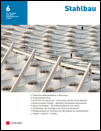
Stahlbau
Scope & Guideline
Elevating Knowledge in Civil and Structural Engineering.
Introduction
Aims and Scopes
- Steel Construction and Design:
The journal covers various aspects of steel construction, including design methodologies, structural analysis, and innovative design practices that enhance the performance and sustainability of steel structures. - Material Properties and Innovations:
Research on the material properties of steel, including high-strength and composite materials, is a key focus. The journal highlights advancements in materials science that can improve the durability and efficiency of steel constructions. - Sustainability and Environmental Impact:
The journal emphasizes the importance of sustainability in steel construction, exploring methods to reduce carbon footprints, promote recycling, and enhance the lifecycle of steel products. - Structural Health Monitoring and Maintenance:
Papers often discuss techniques for monitoring the health of steel structures, including non-destructive testing and condition assessment methods, which are vital for maintaining safety and extending the service life of infrastructure. - Advancements in Construction Technologies:
The journal features innovative construction technologies such as digitalization, automation, and the use of advanced construction materials, which are transforming traditional practices in steel building. - Regulatory Frameworks and Standards:
Research related to the development and revision of standards and guidelines for steel construction is prominently featured, providing insights into compliance and best practices within the industry.
Trending and Emerging
- Sustainable Steel Construction Practices:
Increasing emphasis on sustainability is evident, with numerous papers addressing methods to reduce the environmental impact of steel construction, including the use of recycled materials and energy-efficient processes. - Digitalization in Construction:
There is a growing trend towards the integration of digital tools, including Building Information Modeling (BIM) and parametric design, which are revolutionizing how steel structures are designed and constructed. - Resilience and Seismic Performance:
Research focusing on the resilience of steel structures, particularly in seismic zones, is gaining attention as the industry seeks to enhance the safety and performance of buildings under extreme conditions. - Innovative Hybrid Structures:
The exploration of hybrid structures combining steel with other materials, such as timber and concrete, is emerging as a significant trend, aiming to leverage the benefits of each material for optimal performance. - Advanced Fabrication Techniques:
Emerging fabrication technologies, including 3D printing and robotic assembly, are being explored in the journal, highlighting their potential to transform traditional construction methods and improve efficiency.
Declining or Waning
- Historical Steel Construction Practices:
Discussions on historical steel construction methods and practices are becoming less frequent, as the focus shifts toward modern innovations and sustainable practices. - Traditional Joinery Techniques:
Research on traditional joinery and connection methods in steel construction has diminished, possibly due to the increasing adoption of advanced welding and fastening technologies that offer better performance and efficiency. - Low-Strength Steel Applications:
There has been a noticeable decrease in papers focusing on applications of low-strength steels, as the industry moves towards higher-strength materials that can offer improved structural performance. - Cold-Formed Steel Applications:
Research on cold-formed steel structures has waned, potentially due to the growing interest in more robust and versatile construction materials and techniques that can cater to contemporary building demands.
Similar Journals

Magazine of Civil Engineering
Exploring New Frontiers in Construction and EngineeringMagazine of Civil Engineering, published by ST-PETERSBURG STATE POLYTECHNICAL UNIVERSITY, is a prominent open access journal dedicated to the field of civil and structural engineering. With an ISSN of 2712-8172 and E-ISSN 2071-0305, it serves as a vital platform for disseminating high-quality research, innovative methodologies, and current trends in building and construction. Since its inception in 2010, the journal has embraced open access, ensuring broad visibility and accessibility for its contributions to the academic community. The magazine holds a respectable position in the academic hierarchy, ranked in the Q3 quartile for both Building and Construction and Civil and Structural Engineering categories as of 2023. It is indexed in Scopus, amplifying its societal impact and reach with a rank of #114/223 in Building and Construction and #224/379 in Civil and Structural Engineering. Researchers, professionals, and students alike are encouraged to engage with the cutting-edge studies presented in the magazine, contributing to the advancement of knowledge and practice within the civil engineering domain.

Developments in the Built Environment
Connecting ideas and practices in the built environment landscape.Developments in the Built Environment, published by ELSEVIER, is a premier open-access journal dedicated to advancing knowledge across multiple facets of the built environment, including architecture, building and construction, civil and structural engineering, and computer-aided design. Since its inception in 2020, this journal has established an impressive Q1 ranking across various categories, reflecting its commitment to high-quality peer-reviewed research and its influential presence in the field, as evidenced by its strong Scopus rankings, such as Rank #7 in Engineering - Architecture. With an open-access model, it ensures that groundbreaking research is accessible to all, supporting the dissemination of innovative ideas and practices within the global community. Researchers, professionals, and students are encouraged to contribute to the discourse on sustainable design and technology, making this journal an essential resource for anyone engaged in the future of built environments.
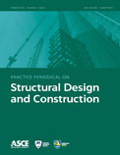
Practice Periodical on Structural Design and Construction
Transforming Ideas into Structural RealitiesPractice Periodical on Structural Design and Construction, published by the American Society of Civil Engineers (ASCE), is a vital resource within the fields of civil and structural engineering. With an ISSN of 1084-0680 and an E-ISSN of 1943-5576, this journal aims to disseminate innovative research and practical applications that enhance the design and construction process. Recognized in the 2023 Scopus rankings with commendable placements across categories, including a Q2 designation in Building and Construction, this journal serves as a platform for discourse on the latest advancements and case studies in structural engineering. Though not an Open Access publication, it continues to facilitate the exchange of knowledge and expertise among researchers, professionals, and students engaged in the built environment. The editorial board encourages submissions that contribute to the understanding of sustainable practices, innovative technologies, and effective construction methodologies to meet the evolving needs of infrastructure development.
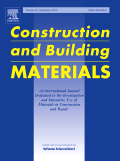
Construction and Building Materials
Exploring sustainable solutions for modern construction.Construction and Building Materials, published by ELSEVIER SCI LTD, is a highly regarded journal in the fields of Construction and Building, Civil and Structural Engineering, and Materials Science. With an impressive Q1 ranking across multiple categories in 2023, the journal is recognized for its high-impact research, reflected in its Scopus rankings—13th out of 379 in Civil and Structural Engineering and 9th out of 223 in Building and Construction. Spanning from 1987 to 2024, it serves as a pivotal resource for researchers, professionals, and students aiming to explore advances in materials used in construction and their applications. However, it does not currently offer Open Access options. The journal stands as a vital platform for disseminating cutting-edge findings that can drive innovation and efficiency in the construction industry while addressing contemporary challenges, thus reinforcing its significance in shaping sustainable practices and technological advancements.
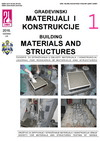
Gradevnski Materijiali I Konstrukcije-Building Materials and Structures
Advancing construction knowledge for a sustainable future.Gradevnski Materijiali I Konstrukcije - Building Materials and Structures is a premier open-access journal dedicated to advancing the field of construction materials and structural engineering. Published by SOC MATERIALS & STRUCTURES TESTING SERBIA, this journal provides a platform for researchers, professionals, and students to share their innovative findings and developments in building materials. With a commitment to open-access since 2012, it fosters unrestricted availability of research for a wider audience, encouraging collaboration and knowledge dissemination. The journal features a diverse range of topics, including material testing, structural integrity, and sustainable construction practices, making it a vital resource for those engaged in the design and analysis of structural components. By fostering the advancement of research and practice in this crucial sector, Gradevnski Materijiali I Konstrukcije plays an essential role in shaping the future of construction and material science.
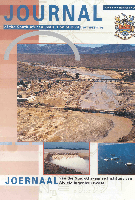
Journal of the South African Institution of Civil Engineering
Innovating the future of South African infrastructure.Journal of the South African Institution of Civil Engineering (ISSN: 1021-2019) is a distinguished open-access publication dedicated to advancing the field of civil engineering in South Africa and beyond. Established by the South African Institution of Civil Engineering (SAICE) and South African Institute of Steel Construction (SAISI), it serves as a critical platform for sharing research, case studies, and industry developments. The journal has been openly accessible since 2015, ensuring broader dissemination of knowledge among researchers, professionals, and students alike. Although it currently holds a Q4 ranking in Civil and Structural Engineering and is positioned within the lower percentiles in Scopus rankings, its commitment to fostering growth in the engineering sector remains strong. Covering various topics from structural design to innovative construction methodologies, the journal invites contributions that push the boundaries of current practices and methodologies. This publication is essential for those invested in sustainable engineering solutions, aiming to collaborate and contribute towards the evolution of civil engineering standards in South Africa.

Advanced Steel Construction
Exploring Cutting-Edge Techniques in Steel ConstructionAdvanced Steel Construction is a prominent journal published by the Hong Kong Institute of Steel Construction, dedicated to the field of structural engineering and material sciences with a specific focus on steel construction techniques and advancements. Since its inception in 2005, the journal has established itself as a valuable resource for researchers, professionals, and students alike, offering insights into the latest developments and innovative practices within the realms of building construction, civil engineering, and materials mechanics. With its recognition as a Q2 journal across multiple engineering categories, including Building and Construction, Civil and Structural Engineering, Mechanical Engineering, and Mechanics of Materials, it ranks competitively in Scopus rankings, highlighting its significance in academic discourse. The journal is based in China, at the Hong Kong Polytechnic University, and provides an essential platform for sharing groundbreaking research and fostering collaboration within the engineering community.
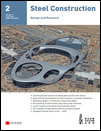
Steel Construction-Design and Research
Elevating Engineering Standards through Steel InsightsSteel Construction-Design and Research is a premier journal published by ERNST & SOHN, focusing on the latest advancements and research within the field of steel construction and structural engineering. With an ISSN of 1867-0520 and E-ISSN 1867-0539, this journal serves as a vital resource for engineers, researchers, and academics committed to enhancing the design and performance of steel structures. Located in the United States, its reputation is bolstered by its impressive standing in various Scopus categories; it ranks in the Q2 quartile for Building and Construction, Civil and Structural Engineering, Mechanics of Materials, and Metals and Alloys as of 2023. This journal is particularly significant as it captures high-quality research spanning critical years from 2011 to 2012 and 2014 to 2024, fetching valuable insights into the evolving methodologies and applications in steel construction. Although it does not operate under an Open Access model, its rigorous peer-review process ensures that contributors deliver top-tier research, making it an essential publication for anyone engaged in the field.

ENGINEERING JOURNAL-AMERICAN INSTITUTE OF STEEL CONSTRUCTION
Elevating Construction Standards with Cutting-Edge Research.ENGINEERING JOURNAL-AMERICAN INSTITUTE OF STEEL CONSTRUCTION, published by the American Institute of Steel Construction, stands as a vital resource for researchers, practitioners, and students in the fields of Building and Construction as well as Civil and Structural Engineering. With a history tracing back to its convergence in 1968 and an ongoing commitment to advancing engineering knowledge up to 2024, the journal is indexed under the ISSN 0013-8029. Despite its current open access status, the journal carries significant scholarly weight, reflected in its Q3 ranking in both relevant categories for 2023 and Scopus rankings indicating robust academic relevance within its sectors. The publication aims to disseminate innovative research, practical insights, and critical reviews that contribute to the enhancement of steel construction and infrastructure development. Situated in the heart of Chicago, the journal's dedicated focus on steel's pivotal role in engineering design and application forms an essential part of the conversation around modern building practices and sustainability challenges in the construction industry.

Nanotechnologies in Construction-A Scientific Internet-Journal
Elevating Construction Standards with Nanotechnology BreakthroughsNanotechnologies in Construction-A Scientific Internet-Journal, published by NANOSTROITEL STVO, is a pioneering open-access journal that has been disseminating critical research and advancements in the field of nanotechnology as it applies to construction since its establishment in 2009. With an ISSN of 2075-8545, this journal serves as an essential platform for researchers and practitioners seeking to explore innovative materials, techniques, and applications that leverage nanoscale engineering to enhance building processes and performance. Operating from Moscow, Russia, this journal is indexed in Scopus, currently positioned in the third quartile (Q3) within the categories of Building and Construction and Engineering (miscellaneous), illustrating its significance in advancing knowledge and innovation in these domains. The journal aims to create a collaborative space for the dissemination of multidisciplinary research, encouraging contributions that address pressing challenges in the construction industry through the lens of nanotechnology. By offering open access to its content, it ensures that valuable insights are accessible to a broad audience, including students, researchers, and industry professionals committed to pushing the boundaries of what is possible in construction engineering.